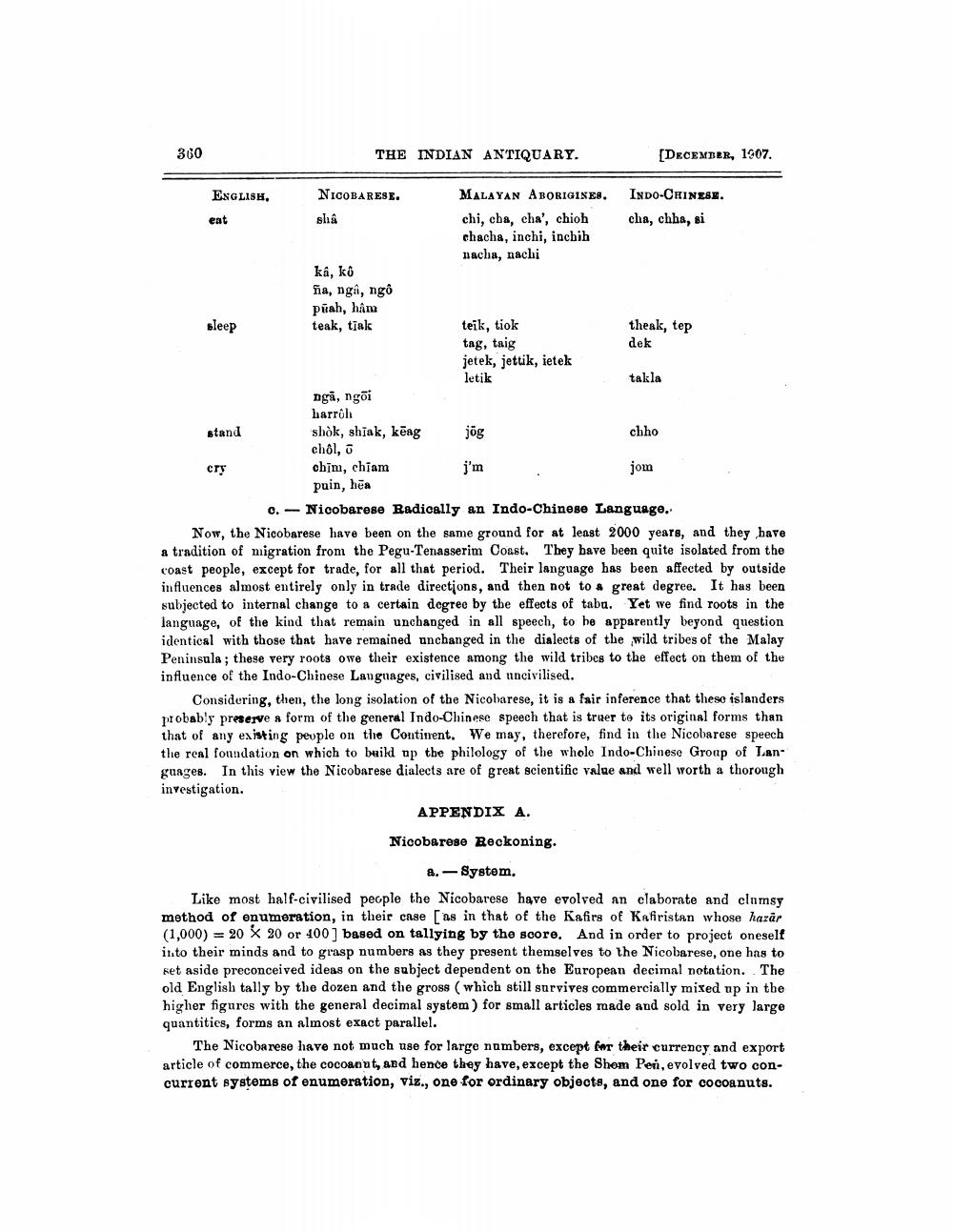________________
360
THE INDIAN ANTIQUARY.
[DECEMBER, 1907.
eat
sla
sleep
jög
ENGLISH, NICOBARESE.
MALAYAN ABORIGINES. INDO-CHINESE chi, cba, cha', chioh cha, chha, si chacha, inchi, incbih
nacha, nachi ka, ko ma, ngây ngô piah, làm teak, tisk teik, tiok
theak, tep tag, taig
dek jetek, jettik, ietek letik
takla ngũ, ngồi
harroh stand shok, shiak, kēag
chho chol, o cry obim, chiam j'm
jom puin, hea
0.- Nicobarese Radically an Indo-Chinese Language. Now, the Nicobarese have been on the same ground for at least 2000 years, and they have a tradition of migration from the Pegu-Tenasserim Coast. They bave been quite isolated from the coast people, except for trade, for all that period. Their language has been affected by outside influences almost entirely only in trade directions, and then not to a great degree. It has been subjected to internal change to a certain degree by the effects of taba. Yet we find roots in the language, of the kind that remain unchanged in all speech, to he apparently beyond question identical with those that have remained unchanged in the dialects of the wild tribes of the Malay Peninsula; these very roots owe their existence among the wild tribes to the effect on them of the influence of the Indo-Chinese Languages, civilised and uncivilised.
Considering, then, the long isolation of the Nicobarese, it is a fair inference that these islanders probably preserve a form of the general Indo-Chinese speech that is truer to its original forms than that of any existing people on the Continent. We may, therefore, find in the Nicobarese speech the real foundation on which to build up the philology of the whole Indo-Chinese Group of Languages. In this view the Nicobarese dialects are of great scientific value and well worth a thorough investigation.
APPENDIX A.
Nicobarese Reckoning.
8.-System. Like most half-civilised people the Nicobarese have evolved an elaborate and clumsy method of enumeration, in their case [as in that of the Kafirs of Kafiristan whose hazar (1,000) = 20 X 20 or 400 ] based on tallying by the score. And in order to project oneself into their minds and to grasp numbers as they present themselves to the Nicobarese, one has to set aside preconceived ideas on the subject dependent on the European decimal notation. The old English tally by the dozen and the gross ( which still survives commercially mixed up in the higher figures with the general decimal system) for small articles made and sold in very large quantities, forms an almost exact parallel.
The Nicobarese have not much use for large numbers, except for their currency and export article of commerce, the cocoanut, and hence they have, except the Shom Peu, evolved two concurrent systems of enumeration, viz., one for ordinary objects, and one for cocoanuts.




